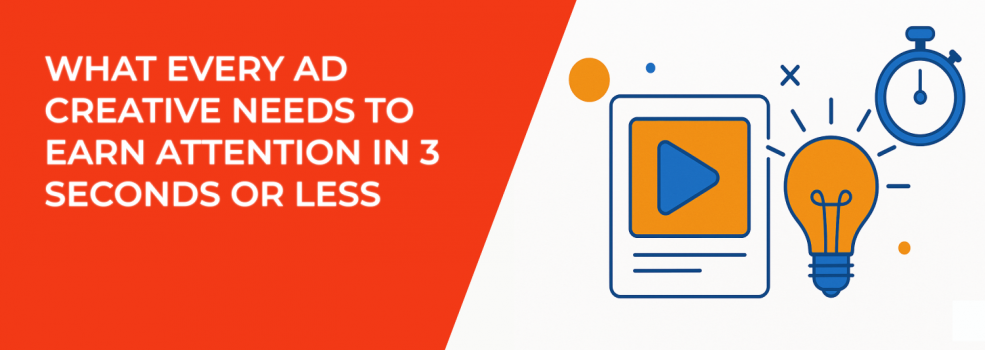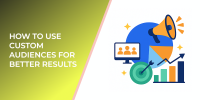In 2025, attention is a vanishing resource. People scroll faster. Feeds are algorithmically smarter. And your ad creative? It gets judged — fast.
Three seconds. That’s your entire window to spark curiosity, deliver value, or get skipped. So, how do you make sure your ads don’t just show up… but stand out?
Let’s dive in.
1. Visuals That Interrupt the Scroll
First impressions happen in milliseconds. Your visual needs to stop the thumb before a word is even read.
High-performing ads typically include:
-
Strong color contrast, not necessarily bright — just different.
-
Close-up imagery or tight cropping that creates tension.
-
Human faces with emotion or eye contact.
-
Movement, animation, or implied motion.
Want proof? Ads that use subtle motion effects and unexpected compositions are consistently featured in high-performing Facebook ad libraries.
If your creative looks like a stock photo or template, it won’t survive the scroll.
2. Copy That’s Designed for Mute Mode
Most people watch Stories, Reels, and even Feed videos without sound.
So if your ad depends on a voiceover to explain the product or benefit, you’ve already lost most of your audience. The solution? Make your visuals and on-screen copy do the heavy lifting.
Here’s what your sound-off strategy should include:
-
Big, legible headlines.
-
Short text overlays (under 10 words).
-
Visuals that show benefits, not just product shots.
Examples of on-screen text that lands without sound:
-
"Tired of paying full price for ads?"
-
"Only 24 hours left to claim your free trial."
-
"3x conversions — zero code required."
-
"Here’s why your CTR is stuck (and how to fix it)."
A good rule: if someone paused the video, they should understand your ad without needing audio at all.
Want to go deeper? This guide to designing Facebook ads without sound or motion shows how top brands stay impactful even in silence.
3. Structure That Feels Fast — Not Rushed
You’re not just competing with other ads. You’re competing with everything else in the feed.
Keep your pacing quick. No long logo fades. No slow intros. Hook first, explain second.
Use this fast-form storytelling framework:
-
Hook: A punchy question, visual surprise, or pattern interrupt.
-
Reveal: The benefit, fix, or transformation.
-
CTA: One simple action that feels easy and frictionless.
Examples of each part:
HOOK:
-
"You’re wasting 40% of your ad budget."
-
"This ad will disappear in 3 seconds."
-
"Facebook's algorithm isn’t broken — you're just feeding it the wrong signals."
REVEAL:
-
"Here’s how AI-built lookalikes outperform basic targeting."
-
"Just one line of copy tripled this campaign’s ROI."
-
"This creative went from $12 CPA to $4.71 — no new audience needed."
CTA:
-
"Watch the full breakdown."
-
"Compare your current results."
-
"Try the copy template — no email required."
Want to build a rhythm that gets results? Learn how to structure a high-converting Facebook ad from hook to CTA in just a few lines.
4. Clear Value, Not Just Cleverness
Great creative isn't just pretty. It’s persuasive.
Ask yourself:
-
Does this ad show why someone should care — fast?
-
Is the benefit clear within the first line or visual?
-
Does it match the intent and mood of the audience?
If not, you're relying too much on branding and not enough on relevance.
Struggling with ads that look nice but don’t perform? You’re not alone — here’s why your Facebook ads look great but still don’t sell and how to fix that disconnect.
Final Tip: Stop Over-Explaining, Start Distilling
Your ad isn’t a brochure. It’s a billboard.
If people have to figure out what your ad is about, they won’t. Your message should be instant — not layered, not nuanced, not subtle.
Your best-performing creative won’t always be your most “creative.” Often, it’s the simplest version that gets to the point faster than the competition.

